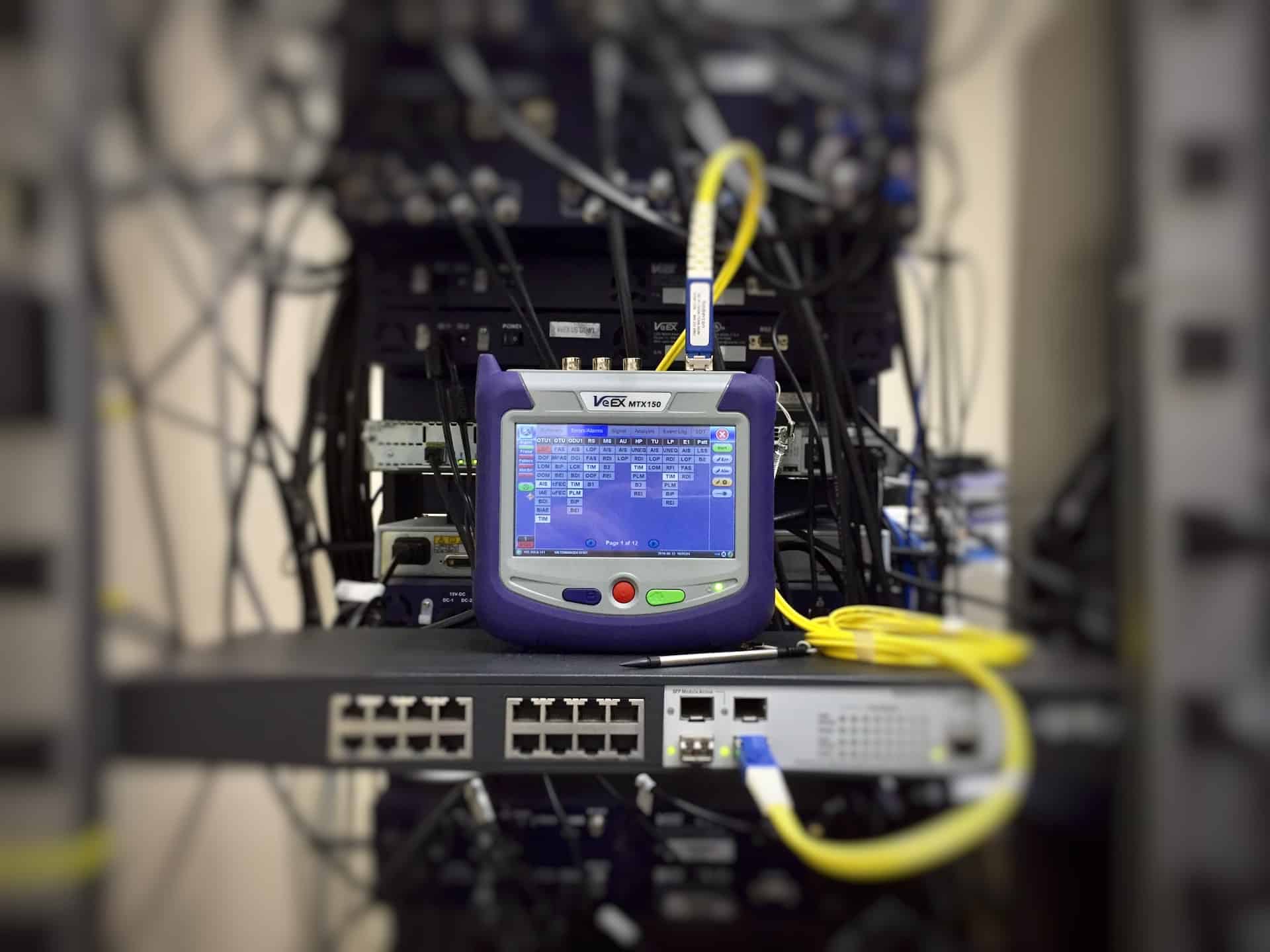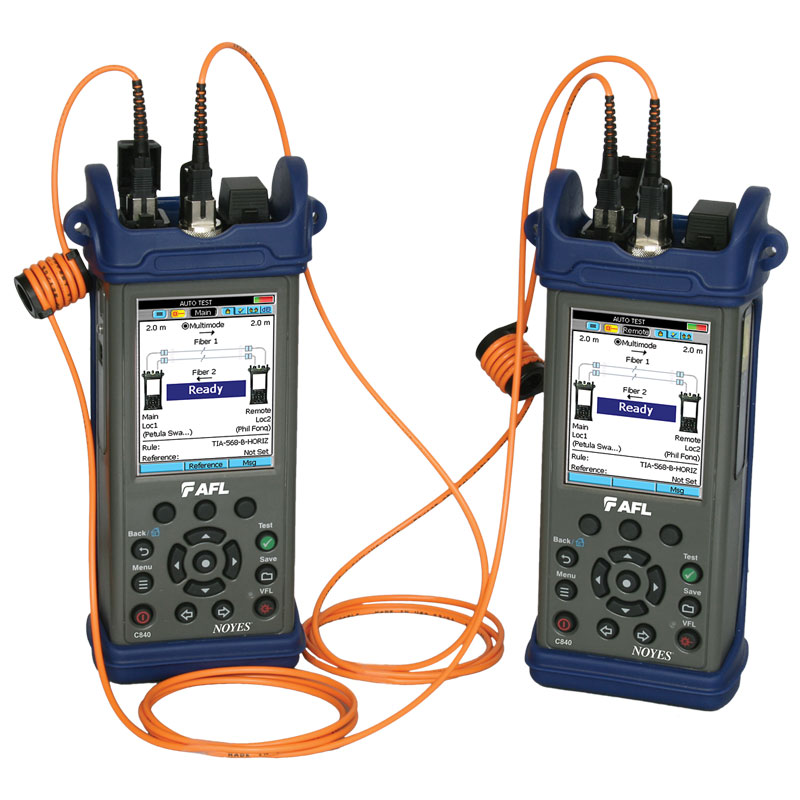High-performance fibre testing equipment is essential for precise material quality assessment.
High-performance fibre testing equipment is essential for precise material quality assessment.
Blog Article
Discover the Importance of Optical Fiber Screening in Modern Telecom
In the world of contemporary telecoms, the significance of optical fibre testing can not be overemphasized, as it offers as the foundation for guaranteeing network dependability and efficiency. By applying routine screening procedures, drivers can preemptively recognize possible concerns such as signal degradation, therefore guarding versus disturbances that can confirm costly. Advanced methods like Optical Time-Domain Reflectometry play an essential duty in this procedure, yet lots of might ignore the more comprehensive implications of these practices. What are the specific benefits that normal screening offers, and how might it shape the future landscape of telecommunications?

Comprehending Optical Fibre Screening
Optical fibre screening is a crucial process in telecoms that ensures the integrity and efficiency of fiber optic networks. This screening encompasses a range of treatments developed to examine the physical and practical characteristics of optical fibres - fibre testing equipment. Key criteria examined consist of optical power loss, bandwidth capability, and fault area, which are vital for maintaining top quality communication web links
The screening process typically entails the usage of specialized equipment such as Optical Time-Domain Reflectometers (OTDR) and Optical Power Meters. OTDRs are used to identify and identify faults, splices, and adapters within the fibre, while power meters gauge the transmitted light signal strength to identify efficiency.
Moreover, screening is carried out at various stages, consisting of during installment, maintenance, and troubleshooting, to make certain that the network meets market criteria and operational demands. Compliance with criteria established by organizations like the International Telecommunication Union (ITU) and the Telecommunications Sector Organization (TIA) is critical.
Benefits of Normal Testing
Routine screening of optical fibers returns numerous advantages that dramatically improve network reliability and efficiency. Among the primary benefits is the early detection of potential problems, such as breaks or degradation in the fiber, which can cause pricey downtime if left unaddressed (optical fibre testing equipment). By recognizing these troubles proactively, telecommunications service providers can lessen solution disturbances and make certain regular connectivity for their consumers
Furthermore, routine screening assists to preserve the integrity of signal high quality. As optical fibers age, their performance can be impacted by elements such as environmental conditions and physical stress and anxiety. Regular analyses permit for the surveillance of signal loss and total transmission efficiency, ensuring that the network operates at optimal levels.
One more significant benefit is compliance with sector standards. Normal testing sustains adherence to regulative needs, consequently reducing lawful and economic risks connected with non-compliance. Additionally, it enhances the general lifespan of the fibre framework by helping with prompt maintenance and fixings.

Common Testing Methods
Checking optical fibers employs various techniques to make certain the integrity and performance of telecommunications networks. Amongst one of the most common methods is Optical Time Domain Name Reflectometry (OTDR), which assesses the entire length of the fibre by sending out a pulse of light and gauging the reflections caused by flaws or breaks. This approach supplies detailed information regarding the place and intensity of mistakes.
An additional prevalent technique is the usage of Optical Power Meters, which gauge the quantity of light sent via the fiber. This method helps identify the loss of signal stamina, making certain that it fulfills sector criteria. Furthermore, Aesthetic Mistake Locators (VFL) are utilized to determine breaks or severe bends in the fibre by projecting a noticeable laser light right into the cable.
Insertion loss testing is likewise essential, as click reference it evaluates the loss of signal power arising from links and mates within the network. The use of Polarization Mode Diffusion (PMD) screening analyzes the influence of fiber characteristics on signal integrity.
Each of these approaches plays a crucial role in maintaining the efficiency and integrity of optical fiber networks, eventually contributing to seamless telecoms operations.
Effect On Network Efficiency
The stability and performance of optical fibre networks straight influence overall network efficiency. In modern telecoms, the effectiveness of data transmission relies greatly on the high quality of the optical fibers utilized. Any degradation in the fibre's problem-- whether due to physical damages, contamination, or excessive flexing-- can result in enhanced attenuation and signal loss, significantly affecting data honesty and speed.
Normal optical fibre testing is necessary to recognize and remedy potential concerns prior to they show up as network failures or stagnations. Strategies such as Optical Time Domain Name Reflectometry (OTDR) and insertion loss screening allow specialists to gauge the performance of fibre web links precisely. These tests not just evaluate the physical condition of the fibers however also ensure compliance with sector standards, thus guarding the network's reliability.
Additionally, a properly maintained optical fiber network adds to minimized operational prices and improved client complete satisfaction, as end-users experience fewer interruptions and greater information rates. Ultimately, the emphasis on extensive optical fiber testing practices works as a foundation for maintaining durable telecommunications framework, ensuring that provider can fulfill the growing needs for transmission capacity and connectivity in today's electronic age.
Future Trends in Examining
As we look in advance, improvements in innovation are positioned to improve optical fiber screening in telecoms. The increase of automation and fabricated intelligence (AI) is expected to enhance the efficiency and accuracy of screening procedures. Automated screening systems can perform extensive analyses with marginal human treatment, dramatically lowering the possibility for mistakes and speeding up time-to-deployment.
Furthermore, the combination of artificial intelligence formulas will make it possible for predictive upkeep, permitting network companies to predict potential issues prior to they intensify into failures. This aggressive technique not only boosts network integrity yet likewise optimizes functional expenses.
Another emerging trend is the growth of mobile testing devices that supply real-time analysis - optical fibre diameter analyser. These devices will certainly equip specialists to perform on-site diagnostics swiftly, assisting in quicker resolutions and enhancing solution top quality
The expansion of 5G networks better requires the evolution of screening methodologies. As data transfer demands boost, conventional screening methods might no much use this link longer are enough. Innovative remedies such as optical time-domain reflectometry (OTDR) and advanced spooky evaluation will come to be crucial in ensuring the stability and performance of high-speed connections.

Verdict
In conclusion, optical fiber screening is important for making certain the integrity and dependability of contemporary telecoms networks. Regular testing methods not just aid determine prospective concerns such as signal loss and faults but likewise add to boosted network performance and customer contentment. As the demand for smooth fibre testing equipment connection proceeds to expand, the adoption of advanced testing techniques will play a critical role in maintaining premium network criteria and sustaining the advancing landscape of telecoms.
Report this page